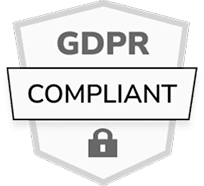3 Most Frequent Questions About Customer Experience Management
Do you know what the acronyms CXM or CEM mean? Good for you! But do you know what they really mean? There are many challenges that marketers face and managing customer experience is surely one of them. What is customer experience management and why should you make it one of your business priorities? The following paragraphs provide answers to some of the most frequently asked questions about CXM and might help you gain a deeper understanding of its most important aspects.
1. What is customer experience management and why is it important?
Customer experience management is a set of customer-centric marketing strategies to improve customer engagement, satisfaction, and experience. It is a system of processes that help increase customer loyalty, reduce churn, strengthen your brand preference, and grow revenue. If you imagine serving your customers is enough, you have a lot to learn. Customer experience management is more than just knowing what brands your customers prefer while buying, for instance, groceries. It is about creating personalized experiences for them based on collected insights.
Why does it matter? Why should you care to gain a deeper understanding of your customers? A positive customer experience is what drives profitability in today’s super-competitive world. Not only will your customers stay loyal to you, but they can often become promoters of your business and recommend it to other potential customers who do not yet know you.
2. What are the best ways to measure customer experience?
Gaining deeper knowledge about your customers does not happen overnight. It comes from collecting customer insight across all channels using various CX metrics and feedback tools. Let’s have a look at some of the basic, widely used metrics.
· NPS (Net Promoter Score)
This standard metric indicates whether a customer would recommend your company. The customers give ratings from 0 to 10, and the scale is usually accompanied by a text field where they can provide further explanations for their rating. This metric can help you identify loyal customers as well as reasons for churn.
· CSAT (Customer Satisfaction)
The CSAT metric measures customer satisfaction with a service, a staff member, or another specific contact. This can provide detailed information on what channels need improvements.
· CES (Customer Effort Score)
Using a 5-point scale, this metric shows how much effort a customer must put in resolving their request within a specific channel. It could be anything from purchase to setting their user account. Once you get a better idea about the processes that need improvements, you are one step closer to resolving the issues and increasing the conversion rate.
All these metrics can provide valuable insight for further analysis of the company’s strong and weak points as well as actionable data based on which quick improvements can be made.
3. What can I do to improve my customer experience management?
First, create your customer experience strategy. You have now collected all the actionable data, but your job does not end there. Without acting on the findings, your customer experience is unlikely to improve. Analyse the insights and find out what makes your customers happy or what makes them turn their back on you. Analysing the feedback will help you determine what changes you need to implement and who should be included in your CX strategy.
Do not forget to measure your scores regularly to see how they change over time and compare it to your competition’s scores. Only then will you be able to tell if your CX strategy is working or if a different approach needs to be adopted.
If all this seems like a lot of work, or if you do not have an on-site CX team, there is another option – customer experience consulting. With the help of CX professionals, you will be able to conduct quality monitoring and get guidance on which of your CX processes need improvements. Customer experience consulting often helps the whole company better grasp the meaning of CXM and implement changes that lead to a more positive customer experience. Consulting your customer experience with professionals and deploying suitable, tailor-made short-term or long-term CX strategies is key to successful customer experience management.
Conclusion
On a final note, it does not pay off to underestimate customer experience management. If you have other questions than those answered above, or if you feel like it is about time to level up your customer experience management game, our Staffino team of CX professionals will be happy to provide an independent second opinion and help you deliver the best possible experience for your customers.









